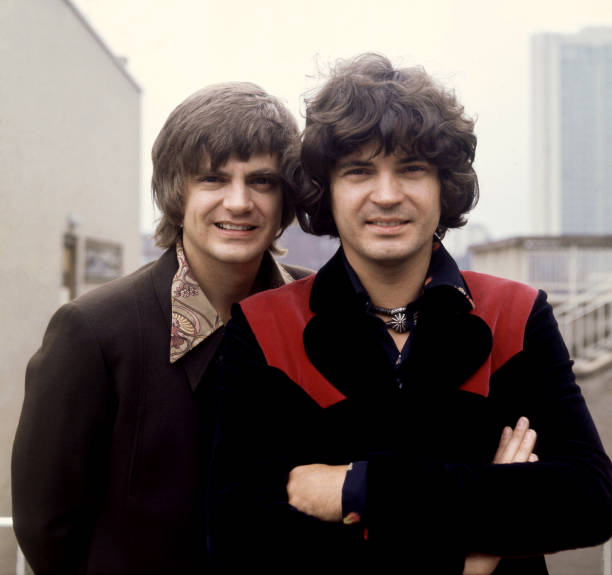 Introduction and Short Summary of the Song
Introduction and Short Summary of the Song
“Claudette” is one of The Everly Brothers’ energetic rock-and-roll numbers, released in 1958 as the B-side to their smash hit “All I Have to Do Is Dream.” Written by Roy Orbison, the song stands out for its upbeat rhythm, playful lyrics, and lively vocal delivery. While “All I Have to Do Is Dream” embodied romantic longing, “Claudette” exuded joy and excitement, celebrating a woman whose charm and allure make her unforgettable. Together, the two sides of the single perfectly showcased the Everlys’ versatility, with “Claudette” adding youthful exuberance to their repertoire.
Origins of the Song
“Claudette” was written by Roy Orbison and named after his first wife, Claudette Frady. Orbison penned the track as a love song celebrating her, and it eventually played a pivotal role in his career. When The Everly Brothers recorded the song and placed it as the B-side to “All I Have to Do Is Dream,” its success provided Orbison with enough financial stability to leave his day job and focus on music full time.
---> Scroll down for the VIDEO
For the Everlys, recording “Claudette” allowed them to expand their catalog with a lively number that matched the excitement of the rock-and-roll era. Their version highlighted their ability to deliver not only tender ballads but also upbeat, danceable tracks.
Why The Everly Brothers Released “Claudette”
The Everly Brothers released “Claudette” as a companion piece to “All I Have to Do Is Dream” to balance emotional depth with high-energy fun. It demonstrated that they were not confined to one mood or style. Including “Claudette” also strengthened their connection to rising songwriters like Orbison, whose material fit their style perfectly.
---> Scroll down for the VIDEO
Though it was a B-side, the song gained attention on its own, further proving the Everlys’ knack for turning almost any material into something memorable.
The Message Conveyed in the Song
The message of “Claudette” is straightforward: it’s a celebration of love, attraction, and the excitement of being captivated by someone special.
Key themes include:
-
Romantic Admiration: The lyrics praise Claudette’s beauty and charm.
-
Exuberance: The upbeat tempo mirrors the narrator’s excitement.
-
Youthful Energy: The song captures the thrill of young love in the rock-and-roll era.
-
Joy: Unlike many Everly Brothers ballads of heartbreak, this track radiates positivity.
The song’s simplicity and enthusiasm make it one of the more lighthearted entries in their catalog.
The Recording and Musical Characteristics
“Claudette” is musically vibrant, reflecting the playful nature of its lyrics.
-
Vocals: Don and Phil’s harmonies remain tight but are delivered with more swing and excitement than in their ballads.
-
Instrumentation: Prominent guitars, driving rhythm, and rock-and-roll percussion push the track forward.
-
Mood: Upbeat, celebratory, and fun.
-
Style: Rockabilly-infused pop, perfectly aligned with the 1950s rock-and-roll sound.
The energetic arrangement makes it ideal for dancing, a hallmark of much of the Everlys’ early work.
Cultural and Commercial Impact
Commercially, “Claudette” benefited from being the B-side of one of the Everly Brothers’ biggest hits, “All I Have to Do Is Dream,” which sold over a million copies. Though it did not achieve the same chart-topping status on its own, “Claudette” was widely heard and appreciated, contributing to the duo’s reputation for consistently strong material.
Culturally, the song had an important impact beyond the Everlys’ careers. For Roy Orbison, its success as a recorded track marked a turning point, giving him the confidence and financial security to pursue his career as a performer and songwriter. Without “Claudette,” Orbison’s path to becoming a rock-and-roll legend might have been more uncertain.
For fans, the song showcased another side of the Everlys—playful, lighthearted, and fun—adding depth to their public image and balancing the melancholy tones of some of their other material.
Legacy of “Claudette”
Today, “Claudette” is remembered as both a strong B-side and an important stepping stone in music history. For the Everly Brothers, it demonstrated their ability to handle upbeat rock-and-roll with the same mastery they brought to ballads. For Roy Orbison, it represented the beginning of his rise as a legendary songwriter and performer.
For The Everly Brothers’ legacy, the song underscores their role as interpreters of great material. Their harmonies and youthful energy brought Orbison’s composition to life, making it an enduring part of their 1950s catalog.
More broadly, “Claudette” remains a reminder of the interconnectedness of early rock-and-roll figures. The collaboration between Orbison as a songwriter and the Everlys as performers helped shape the careers of both, contributing to the era’s rich tapestry of musical innovation.
Over six decades later, “Claudette” still sparkles with the joy and excitement of young love. It may not have the iconic status of the Everlys’ biggest hits, but it remains an essential piece of their story and a charming example of rock-and-roll’s early exuberance.